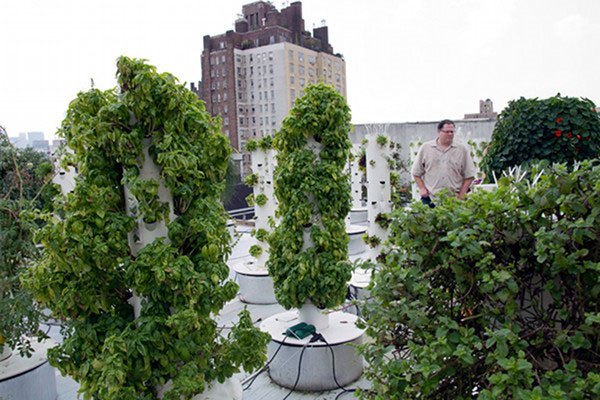
The 23-year-old Syrian man, Abdul-Rahman al-Masri, climbed to his roof seven floors a day to see the vegetables he had grown using the hydroponic system. This young man has been looking for a project in the last year of his studies at the School of Civil Engineering to help him make a living without being restricted by fixed work.
After research, al-Masri realized that the best choice for work is food, because no matter how hard life is, people still need food. With no farmland to grow vegetables, the young man turned to the hydroponic system, which is a method of growing plants in a water-based and nutrient-rich manner.
Hydroponics does not require soil. Instead, the root system is supported by an inert medium (such as perlite, rock wool, clay particles, sphagnum moss, or pellet stone). After borrowing $4,000 from a friend, the young man started the project on the roof of a house in the Bethesam suburb of Damascus and tested the system for two years.
He said: “The idea started in 2018. I have been looking for projects that I can develop, especially projects that will continue to develop regardless of the situation.” Al-Masri added that he prefers hydroponic systems because it can be installed anywhere.
His 65-square-meter roof provided him with good conditions for establishing a planting system, in which water flows through plastic pipes, which are connected to each other at different heights to water the plants.
Al-Masri checks the water levels in plants and test tubes almost every day. He is currently planting cucumbers and harvesting will be ready in a few months. He grows different types of vegetables according to the time of year.
Al-Masri said he can harvest 35 tons of vegetables a year and sell them to nearby grocery stores. He said: “I realize that no matter what happens, the food project will continue. During the current coronavirus crisis, we realize that only food is still needed.”
The energetic young people set an example for the young generation, and there are many ways to make people live better and more focused and confident. He said: “I tell people of my age that you should not give up your dreams, as long as you have proper efforts and determination, everything is possible.”
Masri’s neighbor Ahmed told Xinhua: “I am really proud of him. He is our neighbor and we like everything he does here because he makes the most of the useless space on the roof, Make useful things useful. Hydroponics on roof, don’t need LED Grow light to supplement light. ” He hopes he can expand his projects to develop products of better quality and higher prices to cover more markets. He said: “If I have more arable land and capital, in terms of quality and price, I may have better, greater output.”























